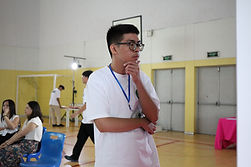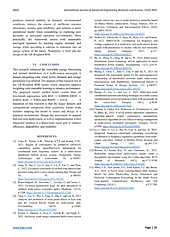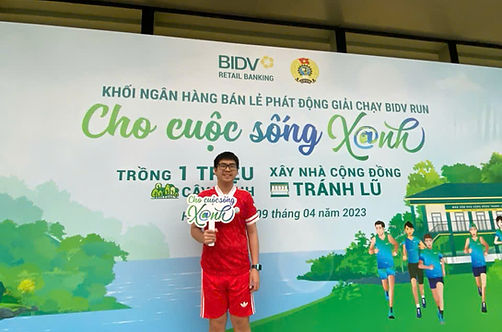
NGUYEN MINH TRI
Safe Green Science for the Community
My passion for green and sustainable energy drives me to explore how science can create a safer and cleaner future for the community. I’m fascinated by renewable sources like solar and wind power, and how they can reduce pollution while promoting long-term sustainability. I love researching and experimenting with eco-friendly technologies that make energy use more efficient and accessible for everyone. My goal is to develop innovative, practical solutions that protect the environment and empower communities to live greener lives. Every day, I keep learning, testing new ideas, and striving to turn my passion for safe green science into real-world impact.
See my works here!



Founder & President
Empowering Children Through Safe Electricity – Say Elec
06/2024 – Present
I still remember the first night in Mu Cang Chai. As darkness fell, the small classroom was dimly lit by a single old bulb. The children huddled together, squinting to see their books. A little girl looked up and asked, “Why does the light at my home keep flickering?”
Her innocent question struck me deeply. I realized that something I had always taken for granted — light — was a rare privilege for them.
That moment sparked my resolve to turn scientific knowledge into action. In June 2024, I founded Say Elec, a student-led nonprofit club dedicated to bringing electrical safety and energy-saving education to children in remote areas.
We started with just ten members, divided into three small teams. Together, we learned to teach creatively — building simple circuit models, producing educational videos, and designing quiz games about electricity. Then, we brought those lessons to classrooms in the mountains of Mu Cang Chai and Yen Bai. Within a few months, we had organized five workshops for nearly a hundred students — many of whom, for the first time, learned why they should never touch wet outlets or why turning off the lights when leaving a room can make the entire school brighter for longer.
But I didn’t want to stop at lessons. I wanted to bring real light to them. With my team, we raised funds to install 200 energy-saving LED bulbs across 18 classrooms in Yen Bai and Lai Chau. Later, we partnered with local authorities in Sa Pa to bring three solar panels to small community workshops. We carried, climbed, built frames, and connected wires ourselves — guided by three local electricians.
Six months later, I returned to see the results. Teachers shared that evening classes were now brighter, electricity was stable, and energy costs dropped by nearly 37% during peak hours. The school saved over 20 million VND — a modest number, but in the mountains, it meant a lot.
As I stood watching the new lights glow and hearing the children’s voices echo through the night, I felt that science had never been so alive. Say Elec is not just a project — it’s proof that knowledge can illuminate hope.
“Light doesn’t just brighten a room — it brightens minds and ignites hope.”











Head of Academic Department
Leading Science for Change – Hanoi Science Fair
March 2025 – September 2025
After Say Elec helped me realize the power of shared knowledge, I began to wonder: If every student could use science to change one small thing around them, how different could the world become?
That question led me to the Hanoi High School Science Fair 2025, where I served as Head of the Academic Department, overseeing all academic content under the theme “Green Science.”
Together with five team members, we spent months designing an event that was more than a competition — it was a journey of learning and collaboration. We created a detailed communication timeline with over 30 media posts, wrote a comprehensive Guidebook for participants, prepared sponsorship proposals, and invited a distinguished judging panel including Mr. Nguyen Duy Vinh (Phenikaa University) and Mr. Nhu An Lam Duc (Elio Education).
Every detail — from the layout of 20 exhibition booths to the 50 million VND logistics plan — was carefully reviewed. Each late night spent refining the plan brought me closer to my dream of creating a true scientific playground for students.
When the event finally took place at TH School, I stood in the crowded hall filled with students, parents, teachers, and corporate guests — over 1,500 attendees. In the soft glow of miniature solar models, I watched students passionately present their projects. At that moment, I realized that when given the space to create, young minds can turn science into a language of hope.
“Science doesn’t only live in laboratories — it thrives in the hands of young people who dare to dream of a greener world.”









Co-author | Instructor: Dr. Vũ Ngọc Kiên, Academy of Military Science & Technology
Research for Renewable Energy – Abstract
July 2025 – October 2025
In the summer of 2025, I joined Dr. Vu Ngoc Kien’s research group at the Academy of Military Science & Technology — where renewable energy problems moved beyond equations and became real-world efforts to light the world with cleaner power.
Stepping into the lab for the first time, I saw dozens of screens displaying data on solar radiation, wind speed, and weather conditions — each number flickering like the heartbeat of the Earth. I knew I was in the right place.
My role was to simulate a microgrid model, collecting data from solar, wind, and hydro sources, and combining them with meteorological information to forecast energy demand over time. In the beginning, prediction errors were huge, but each line of code, each sleepless night fine-tuning algorithms, helped me realize that mathematics is not only for proving — it’s for solving the challenges that shape humanity’s future.
After three months, our study was completed and published in the International Journal of Advanced Engineering Research and Science, marking my first milestone in scientific research.
Paper: A Novel Optimization Approach for Sustainable Renewable Energy Distribution and Multi-Source Resource Integration
Published in: International Journal of Advanced Engineering Research and Science (DOI: 10.22161/ijaers.129.4)
Abstract:
The rapid expansion of renewable energy systems has introduced new challenges in ensuring sustainable, efficient, and reliable electricity distribution. Variability in generation from solar, wind, and hydro sources, combined with fluctuating demand, necessitates the development of intelligent optimization methods for multi-source resource integration.
This research presents a novel optimization framework integrating solar, wind, and hydro resources with energy storage and auxiliary backup systems to achieve efficient and sustainable distribution within microgrids. The proposed model employs a hybrid machine learning–driven optimization algorithm, combining Ladybug Beetle-driven Weighted Random Forest Regression (LB-Weighted RFR) for accurate power generation forecasting and optimized energy distribution.
The forecasts enable dynamic scheduling that balances supply and demand, reduces peak loads, and maximizes renewable energy utilization. Forecasting integrates historical production data, weather patterns, and grid conditions, achieving low error metrics such as MSE = 0.00008 for energy prediction. Simulation results demonstrate significant improvements over conventional approaches — including reduced operational costs, decreased peak demand, improved energy balance, and enhanced renewable utilization.
“Mathematics becomes meaningful when it lights the world with cleaner energy.”



Coursera Certifications
Certified Learning for a Greener World
March 2025 – September 2025
Amid hands-on projects, I realized that turning green science into sustainable action required more than passion — it demanded a deep understanding of how the world truly works.
From March to September 2025, I committed myself to studying three specialized online courses — each a vital piece of my journey: policy, economics, and technology.
The first course, “Global Energy and Climate Policy” (University of London), opened my eyes to how governments and global power systems collaborate in the transition toward low-carbon energy. I began to see that climate policy decisions are not just data points — they are stories of people, resilience, and the planet’s survival.
Next came “Environmental Economics” (University of Michigan), where I learned to quantify environmental impact through the lens of economics — by analyzing cost-benefit models and resource management. Each lesson reminded me that sustainable growth cannot exist without balance between progress and responsibility.
Finally, “AI for Mechanical Engineers” (University of Michigan) offered a glimpse into the future of energy through technology. I explored how artificial intelligence can simulate power systems and optimize mechanical designs to improve energy efficiency and reduce waste.
Together, these three courses wove science, economics, and technology into a single interdisciplinary and global mindset. I learned that every green innovation begins with knowledge — and knowledge finds its true meaning when it serves to make the world better.
“Sustainability isn’t just a concept we study — it’s a promise we learn to keep.”





Head of Public Relations
MoSafe – Protecting Lives from Natural Disasters
03/2025 – Present
In March 2025, I joined MoSafe, a community project founded to help people in mountainous areas prevent and recover from natural disasters. As Head of Public Relations, I coordinated communication, connected with local authorities, and led volunteer teams to carry out field activities.
The journey began in the cool spring air of Mu Cang Chai. Standing among vast terraced fields in my red volunteer shirt, I guided middle school students as they watched a flash flood simulation built with soil, water, and small plastic tubes. When the first stream of water overflowed the model, a girl exclaimed, “Now I understand why floods come so fast!”
At that moment, I realized that science belongs not only in laboratories but also in the daily lives of people who need it most.
Our team conducted surveys and interviews with over 30 households and local officials in Cao Bang, Lao Cai, Lai Chau, and Ha Giang to understand the causes and impacts of flash floods. Each story was filled with fear and tears, yet also with the resilience of people living close to nature.
From the collected data, we organized three training sessions on flash flood and landslide prevention for over 70 middle school students. We built miniature terrain models and used water flow experiments to show how heavy rain causes disasters—and how to stay safe.
Beyond education, we donated 500 seedlings and 50 rolls of tarpaulin to help residents plant trees to prevent landslides and reinforce shelters. Six months later, 80% of participating households reported no further flood damage—a small yet deeply meaningful result.
When floods struck Quang Tri, I led ten MoSafe volunteers to assist in recovery efforts: cleaning mud, sanitizing five classrooms, and delivering 20 relief packages with food and school supplies worth 8 million VND. To maintain funding, I collaborated with Aqua Art Gallery to organize a charity art auction, raising 20 million VND for future aid programs.
Through MoSafe, I learned that science is not just about numbers or theories—it’s about empathy and understanding when placed in the right context. At MoSafe, I didn’t just bring knowledge to communities; I learned how knowledge itself can become a shield that protects lives.
“Science is not only about discovery — it’s about protecting lives.”
